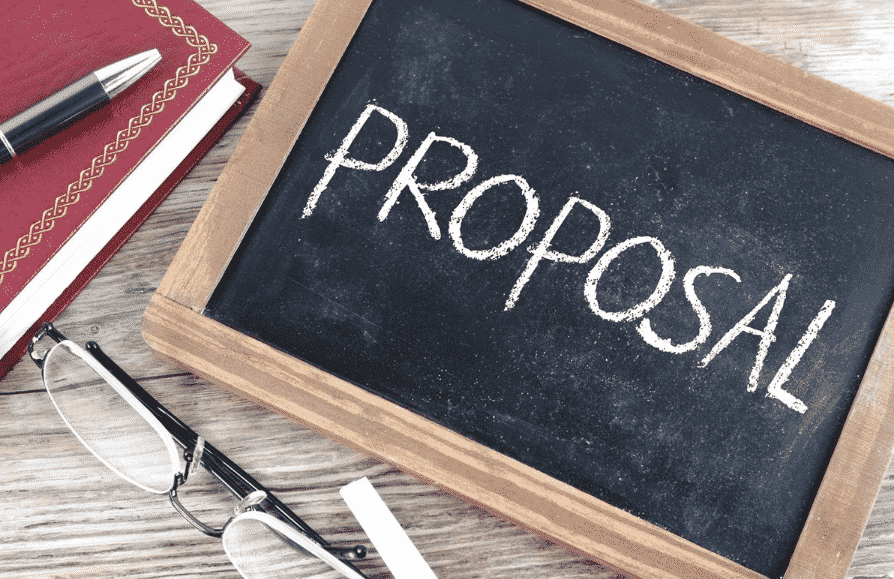
As a literary agent at Trident Media Group, a plethora of nonfiction book ideas come across my desk.
So many people think they have a book in them, but it takes more than merely being audacious to see a book through to publication.
What’s unique about nonfiction is it can be sold on a proposal-basis to book publishers. That’s because it’s idea-driven, as opposed to fiction, which needs to be sold on a fully-written and polished manuscript.
How to write a book proposal for nonfiction
Want to write your own nonfiction book proposal? Use these guidelines as your template, with each section on their own page(s).
Here’s what you should include when you write a book proposal.
1. Title page
This is simple enough. Add the title and/or subtitle (separated by a colon or on a new line) and “A Proposal by” followed by your name.
2. Contents
As with a book’s table of contents (TOC) listing the chapters, a nonfiction book proposal will have a TOC page listing the individual sections and page numbers of the proposal.
Look at most any TOC inside a book to get a sense of what this page will look like.
3. Proposed title(s)
Slightly different from the Title Page section of the book proposal, this is where alternative titles and subtitles can be proposed in a list format.
4. Author(s)
The author(s) name(s) of the book proposal will be listed here. Titles and suffixes can be excluded.
5. One-sentence description
In a one-sentence tagline/hook sort of fashion, capture what the book is about in its entirety.
This can be a stressful practice for authors as storytellers by nature, but it’s good to learn to speak about your book concisely.
6. Categories
Categories and subcategories the book will fall into are listed here.
For example: motivational self-help, personal transformation/growth, philosophy, positive psychology, etc. You can find a more indepth guide on keywords and categories, or purchase a tool like Publisher Rocket.
7. Quotes
This is a section for inspirational or framing quotes that one would see in the opening pages of a book.
In a business book, a writer might want to quote Warren Buffet, or in a technology book, Steve Jobs. A poem or short passage from a book could even go there.
Limiting this section to a few quotes is ideal.
8. Audience
In a paragraph or two, add the target demographic(s) for the book.
A testament of the public’s powerful desire and current trends around the topic could also be listed here.
9. Purpose and need
On a much deeper level, this section tells us why we as readers need to read this book, and why now? In a simple way, the reader has a problem or a yearning, and this book fulfills that need with its purpose.
It’s OK to take a page or so to explain.
10. Unique angles
Explain how the book will carve out its place in a busy marketplace of similar books. Some of the takeaways that can only be experienced from this very book should be shared here, perhaps in bulleted format.
11. Reader benefits
What will the reader gain from reading this book? This section answers that question with a number of benefits to the reader.
Will the reader experience joy? Will they feel a part of something bigger than themselves? Tell us here in this section along a short list.
12. Potential endorsers
This section is devoted to people of note who could provide advance praise/blurbs for the forthcoming book.
They might even be people of note who would be willing to write an introduction or forward to the book. Not only names should be listed here, but titles and why these are important endorsements.
13. Book structure overview
List the format, eventual word count (preferably within normal or appropriate range), page count, and deadline by which a finished manuscript could be turned into the publisher (should you get a contract).
Can you guess what you do here? Write a little something about yourself!
It can be as simple as one paragraph or a couple of pages. Relevant writing experience, credentials, awards/accolades, previous publications, fun facts, links to author sites and social media pages (as well as the number of social media followers, if impressive), fun personal facts, and contact info can be listed here.
For nonfiction, it’s not enough to have a good idea to write about. The author must be an authority on the subject matter. In other words, author platform is key. (This is different than fiction, which is less reliant on author platform.)
15. Sales history of previous books
For authors with previously published books, this is a list of titles, along with publisher name and publication date.
Below that should be the total sales numbers on the book, from publication-to-date.
If a book from this list was translated into other languages, had a film/TV adaptation, or was turned into an audiobook, that can be mentioned here, too.
16. Chapter outlines
Provide a sparse outline that breaks down each chapter by name and number into a one or two-sentence description, followed by bulleted chapter contents and/or very short description.
17. Bonus content
Have ideas for any fun bonuses, such as activities or interactive/online content having to do with the book? Add those here.
18. Marketing plan
The sky’s the limit!
Share what you and/or the publisher might do as marketing and publicity behind the book’s publication. For a full book marketing plan, check out this article.
19. Sample chapters
Include 3-5 fully-written and polished sample chapters from the forthcoming manuscript.
How long should the book proposal be?
With all of this information, you’ll likely end up with a book proposal that’s dozens of pages long.
Nonfiction book proposals can top out around 50-75 pages, not including sample chapters. Add in those samples, and you’ll have a complete proposal ready to be considered by a literary agent!
Need guidance for how to write a book proposal?
This course on Book Proposals from Chad Allen is one we recommend for authors. We have found it extremely helpful.
This is an updated version of a story that was previously published. We update our posts as often as possible to ensure they’re useful for our readers.


